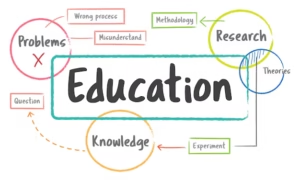5 Tips for Managing Academic Burnout and Stress
Understanding Academic Burnout
Academic burnout is a complex phenomenon that manifests as a state of emotional, physical, and psychological exhaustion specifically
stemming from prolonged academic stress. It is often characterized by feelings of overwhelming fatigue, depersonalization, and a reduced sense of accomplishment. Many students may find themselves feeling increasingly disengaged from their academic pursuits, struggling to maintain motivation, and losing the enthusiasm that initially drove them toward their educational goals.
There are multiple causes contributing to academic burnout. Intense academic pressure, high-stakes evaluations, and an unrelenting pursuit of perfection can create an environment ripe for fatigue. Additionally, factors such as poor time management skills, excessive extracurricular commitments, and lack of social support can exacerbate the feeling of being overwhelmed. As a result, students may experience a decline in their academic performance, further fueling their sense of inadequacy and disconnection from their studies.
The implications of academic burnout extend beyond the individual, influencing not only personal well-being but also academic outcomes. Students grappling with burnout may experience anxiety, depression, and stress-related physical symptoms, impeding their academic progress. Furthermore, prolonged burnout can lead some students to withdraw from school entirely, affecting their long-term educational and career trajectories.
Recognizing the signs of academic burnout is the first step towards addressing it effectively. Variations in academic motivation, altered sleep patterns, and increased irritability are all red flags that students should be mindful of. Understanding that burnout is a common struggle among peers can alleviate feelings of isolation and mitigate the shame often associated with such experiences. Addressing academic burnout through appropriate interventions and support is crucial to fostering a healthier educational environment.
Recognizing the Signs of Academic Burnout
Managing academic responsibilities can often lead to overwhelming stress and fatigue, which may eventually result in academic burnout. It is crucial for students to be able to identify the signs and symptoms associated with this condition. One of the most common indicators is chronic fatigue. This persistent tiredness does not necessarily correlate with the amount of sleep one gets; rather, it manifests as a profound sense of exhaustion that does not dissipate after periods of rest.
Another significant sign of academic burnout is a noticeable lack of motivation. Students may find that tasks they once enjoyed or excelled at suddenly feel burdensome or uninteresting. This disengagement can lead to procrastination, further exacerbating feelings of inadequacy and stress. Additionally, irritability is often prevalent among those experiencing burnout. Routine situations may trigger emotional responses that are disproportionate to the circumstances, impacting both personal relationships and academic performance.
Feelings of overwhelm also represent a critical symptom of academic burnout. Students may feel unable to cope with the demands of their coursework, leading to increased anxiety and stress levels. This can create a vicious cycle, as poor performance or missed deadlines drive further feelings of inadequacy. Recognizing these symptoms is essential for self-awareness; understanding one’s emotional and physical responses to academic pressures can be an important step toward seeking assistance.
Ultimately, being vigilant about these signs is vital for students. By learning to identify the symptoms of academic burnout, individuals can take proactive measures to seek support and implement coping strategies, thereby fostering a more balanced and healthy approach to their studies.
The Importance of Self-Care
Self-care is an integral aspect of maintaining mental health, especially for students who often face academic pressures. Managing responsibilities, deadlines, and personal commitments can lead to significant stress and, ultimately, burnout. It is imperative to recognize that neglecting self-care can exacerbate these feelings, creating a detrimental cycle that impacts both academic performance and emotional well-being. Establishing a regular self-care routine can mitigate these negative effects, promoting resilience and a healthier approach to academic challenges.
 Engaging in self-care practices addresses the whole person—physical, emotional, and mental. Physical self-care includes activities that promote physical health, such as regular exercise, balanced nutrition, and adequate sleep. Incorporating these elements into a daily routine can enhance energy levels and improve concentration, making it easier to tackle academic tasks. Emotional self-care, on the other hand, involves recognition and validation of one’s feelings, which can lead to better emotional regulation and less vulnerability to stress and burnout. Practices such as journaling, meditation, and talking with trusted friends or professionals can provide essential outlets for navigating emotional challenges.
Engaging in self-care practices addresses the whole person—physical, emotional, and mental. Physical self-care includes activities that promote physical health, such as regular exercise, balanced nutrition, and adequate sleep. Incorporating these elements into a daily routine can enhance energy levels and improve concentration, making it easier to tackle academic tasks. Emotional self-care, on the other hand, involves recognition and validation of one’s feelings, which can lead to better emotional regulation and less vulnerability to stress and burnout. Practices such as journaling, meditation, and talking with trusted friends or professionals can provide essential outlets for navigating emotional challenges.
Moreover, mental self-care techniques, including mindfulness and relaxation exercises, can cultivate a state of calm and focus necessary for effective study. As students prioritize self-care, they develop a more profound understanding of their limits and needs. This awareness not only fosters academic success but also nurtures emotional resilience in the face of stressors. Pursuing hobbies and interests outside of academic obligations plays a crucial role in refreshing the mind and body, creating a balanced lifestyle that supports overall well-being.
Ultimately, adopting a holistic approach to self-care is essential for academic success and emotional health. By recognizing its importance and prioritizing self-care practices, students can build a solid foundation that empowers them to navigate their academic journey with confidence and grace.
Tip 1: Prioritize Sleep and Rest
The importance of sleep and rest in managing academic stress cannot be overstated. Adequate sleep is essential for cognitive function, emotional stability, and overall health. When students sacrifice sleep for academic responsibilities, they may experience heightened levels of stress, ultimately leading to burnout. Therefore, establishing a balanced sleep schedule is crucial for maintaining optimal performance.
To create an effective sleep schedule, students should set a consistent bedtime and wake-up time, even on weekends. This routine helps regulate the body’s internal clock, ensuring that individuals feel well-rested and rejuvenated. It is recommended to aim for 7 to 9 hours of sleep per night, as this amount is generally considered necessary for most adults to function at their best.
In addition to a regular sleep schedule, integrating power naps into one’s day can significantly enhance alertness and focus. A short nap of 10 to 20 minutes can effectively refresh the mind without leading to sleep inertia, which typically accompanies longer nap periods. This practice allows students to recharge during breaks and can positively impact their academic productivity.
Moreover, fostering a restful environment is essential for achieving restorative sleep. This can involve minimizing noise disturbances, regulating room temperature, and ensuring that the sleeping area is comfortable. Students should also consider reducing exposure to blue light from screens at least an hour before bedtime, as this can disrupt the natural production of melatonin, the hormone responsible for sleep.
Incorporating these strategies can significantly improve sleep quality, reduce stress levels, and aid in the prevention of burnout. Prioritizing sleep and rest not only enhances academic performance but also contributes to overall well-being. By taking these steps, students can lay a solid foundation for managing the demands of their educational pursuits more effectively.
Mindfulness and Stress Reduction Techniques
In today’s fast-paced academic environment, students are often overwhelmed with pressures that can lead to burnout and heightened stress levels. One effective approach to combatting these issues is through the practice of mindfulness, which involves being present and fully engaged in the current moment. By integrating mindfulness techniques into daily routines, students can significantly enhance their concentration while reducing anxiety.
One common mindfulness practice is meditation, which can be tailored to fit the needs of beginners. To start, find a quiet space where distractions are minimal. Sit comfortably, either cross-legged on the floor or in a chair with your feet flat on the ground. Close your eyes or lower your gaze to minimize visual distractions. Begin by taking deep, intentional breaths—inhale for four counts, hold for four counts, and exhale for four counts. Focus your attention solely on your breath, allowing any intrusive thoughts to drift away. Aim for a duration of five to ten minutes, gradually increasing the time as you become more comfortable with the practice.
Another beneficial technique is deep breathing, which can be practiced anywhere and anytime. To perform deep breathing, sit or stand in a comfortable position. Inhale deeply through your nose, allowing your diaphragm to expand fully. Pause for a moment, then exhale slowly through your mouth. Repeat this process for five minutes, or until you feel a sense of calmness and clarity. Deep breathing can be seamlessly integrated into daily study sessions, providing a quick method to reset and refocus.
Yoga is another effective mindfulness practice that not only promotes physical well-being but also enhances mental resilience. Beginners can start with simple poses like child’s pose or cat-cow to promote relaxation. Attending a local yoga class or using online resources can help students learn proper techniques and foster a sense of community. Regular engagement in yoga can cultivate mindfulness, allowing students to manage academic stress more effectively.
Tip 3: Time Management Strategies
Effective time management is pivotal in mitigating academic burnout and stress. By implementing various time management techniques, students can navigate their workloads with greater ease and efficiency. One highly effective method is the Pomodoro Technique, which encourages focused work intervals followed by short breaks. This approach not only enhances concentration but also prevents fatigue, allowing students to sustain productivity throughout their study sessions. To utilize this technique, one can choose a task to complete, set a timer for 25 minutes of uninterrupted work, and then take a 5-minute break. After completing four such cycles, a longer break of 15 to 30 minutes is advisable. This structured approach fosters a balance between diligence and rest, essential for maintaining mental well-being.
In addition to implementing the Pomodoro Technique, employing the Eisenhower Matrix can greatly enhance task prioritization. This tool categorizes tasks into four quadrants based on urgency and importance, helping students to assess what requires immediate attention as opposed to what can be scheduled for later or delegated. By focusing on what truly matters, students can optimize their productivity and decrease the overwhelming sensation that often accompanies academic responsibilities. Time allocated to less important tasks can be redirected to more crucial assignments, further alleviating stress.
Procrastination often exacerbates feelings of burnout; therefore, cultivating organization is key to overcoming this tendency. Utilizing planners or digital calendars can assist in visualizing deadlines and commitments, making it easier to allocate time effectively. Setting realistic goals and breaking larger assignments into smaller, manageable tasks can also counteract procrastination, ensuring steady progress. Through the careful application of time management strategies, students can create a more balanced academic life, significantly reducing the potential for stress and burnout.
Tip 4: Seeking Support from Peers and Professors
Academic burnout and stress can be formidable challenges for students, often leading to feelings of isolation and inadequacy. However, reaching out for support from peers and professors can play a crucial role in effectively managing these stressors. Establishing communication with fellow students can foster a sense of community, allowing individuals to share their experiences, concerns, and coping strategies. Forming study groups is one effective method to facilitate this connection. These collaborative environments not only encourage the exchange of ideas but also provide mutual support during difficult periods in the academic journey.
In addition to peer support, mentorship from professors can significantly alleviate stress. Professors possess a wealth of knowledge and experience that can guide students in their studies. Initiating a conversation with a professor may seem intimidating, but it can provide critical insights and resources tailored to individual student needs. Professors often appreciate when students take the initiative to seek guidance, as it demonstrates a commitment to their education. Making use of office hours or sending a polite email can be effective ways to open lines of communication.
It is essential to acknowledge that seeking help often carries a stigma in academic settings. This perception can discourage students from reaching out, but recognizing the value of vulnerability is paramount. Understanding that asking for help is a sign of strength, rather than weakness, allows students to embrace support networks. Institutions frequently offer counseling services, academic advising, or wellness programs that can be invaluable resources in times of distress. In fostering an environment where seeking assistance is normalized, students can enhance not only their academic performance but also their overall well-being.
By reaching out for support, whether from peers or professors, students can create a robust support system that is instrumental in mitigating the effects of academic burnout and stress.
Incorporating Enjoyable Activities into Your Routine
Amidst the rigors of academic life, it is essential to incorporate enjoyable activities into your daily routine as a means to combat burnout and alleviate stress. Engaging in hobbies or leisure pursuits can significantly enhance your well-being, providing a necessary counterbalance to the demands of your studies. By allocating time for interests and hobbies that spark joy, you foster a sense of fulfillment and relaxation that can rejuvenate your spirit and improve focus.
Consider setting aside specific blocks of time each week dedicated to activities that you find enjoyable. Whether it is painting, playing a musical instrument, hiking, or cooking, these pursuits can provide an essential outlet for creative expression and mindfulness. The positive effects of engaging in enjoyable activities extend beyond mere relaxation; they can stimulate mental health and even enhance cognitive performance. For example, a short session of drawing or playing an instrument can significantly clear mental clutter and help you approach academic challenges with a fresh perspective.
Moreover, think about how you can integrate these activities into your daily schedule. For instance, if you find that studying for long hours can lead to fatigue, consider adopting the Pomodoro technique, where you work in focused bursts followed by short breaks. During these breaks, indulge in a quick favorite activity, such as playing a game, taking a walk, or spending time with friends. Such practices promote not only creativity but also offer a mental reset that can lead to improved productivity when you return to your studies.
In all, embracing enjoyable activities amid academic commitments is vital for maintaining well-being and preventing burnout. By making time for leisure and fostering creativity, students can experience a more balanced, fulfilling educational journey.
Creating a Sustainable Academic Plan
Developing a comprehensive academic plan is crucial for students seeking to manage stress and avoid burnout effectively. A sustainable academic plan considers individual workloads, mental health, and personal commitments, ensuring a balanced approach to education. The foundation of such a plan should be built upon regular assessment and flexibility. Students should begin by outlining their course schedules, deadlines, and examination dates, creating a clear visual representation of their academic responsibilities.
 After establishing a preliminary schedule, students must take time to evaluate their mental health and stress levels regularly. It is essential to identify periods when academic obligations may become overwhelming. By regularly monitoring their emotional and psychological state, students can anticipate potential burnout triggers and make necessary adjustments to their plans. This proactive approach not only aids in identifying high-stress periods but also fosters a sense of ownership over one’s academic journey.
After establishing a preliminary schedule, students must take time to evaluate their mental health and stress levels regularly. It is essential to identify periods when academic obligations may become overwhelming. By regularly monitoring their emotional and psychological state, students can anticipate potential burnout triggers and make necessary adjustments to their plans. This proactive approach not only aids in identifying high-stress periods but also fosters a sense of ownership over one’s academic journey.
Additionally, integrating effective time-management strategies into the academic plan is essential. Utilizing techniques like the Pomodoro Technique or setting specific study goals can enhance productivity and focus, ultimately reducing stress. It’s also beneficial for students to allocate time for self-care, hobbies, and social activities within their schedules. Striking a balance between academic responsibilities and personal interests can significantly mitigate feelings of burnout.
As students progress through their academic journey, it’s paramount that they remain adaptable, ready to modify their plans based on evolving circumstances. This could involve lightening class loads, seeking support from professors or counselors, or incorporating relaxation techniques and mindfulness into their daily routines. By prioritizing well-being alongside their academic goals, students can establish a sustainable plan that not only fosters success but also nurtures mental health.

